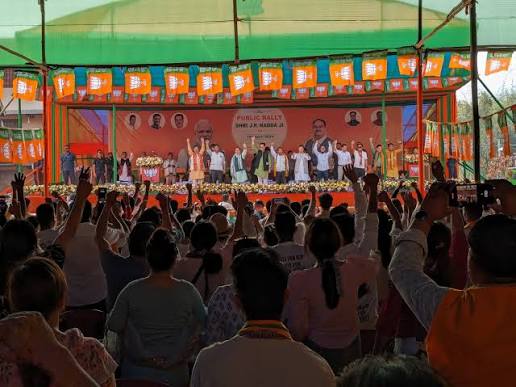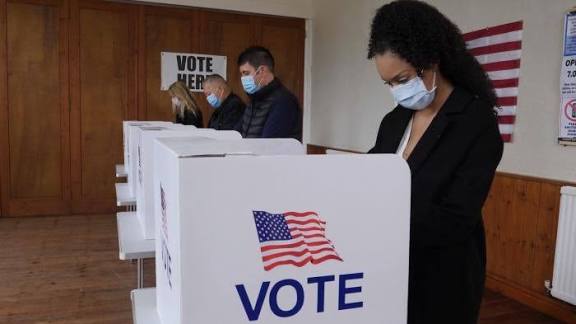Campaign Strategy Shifts: Parties Race to Adapt as Voter Mood Flips Overnight

With temperatures rising with each passing day, various political parties have changed their campaign style and strategy. Today we will discuss about Campaign Strategy Shifts: Parties Race to Adapt as Voter Mood Flips Overnight
Campaign Strategy Shifts: Parties Race to Adapt as Voter Mood Flips Overnight
In modern democracies, political campaigns no longer move at the leisurely pace of decades past. The proliferation of real-time polling, social media, and 24/7 news cycles has compressed the political timeline: voter sentiment can shift suddenly, sometimes overnight, forcing political parties into rapid strategic recalibration. This volatility — once the exception — is becoming the norm. This article examines how and why parties shift their campaign strategies in response to sudden changes in voter mood, what tools they use, and what the risks and rewards of such agility are.
Why Voter Mood Flips Happen
Before diving into campaign strategy, it’s essential to understand what drives sudden changes in voter sentiment.
Focusing Events
External shocks—such as economic crises, scandals, terrorist attacks, or major policy failures—can rapidly reorient public priorities. Political science identifies these as “focusing events”: rare but high-impact occurrences that draw intense media attention and shift the salience of issues.Media Narratives & Social Media
The media environment amplifies these events. Through traditional press and social platforms, news spreads at lightning speed. Parties monitor this ecosystem constantly, ready to pounce on emerging issues.Polling & Survey Feedback
Frequent polling gives parties near real-time visibility into voter mood. Internal and external surveys help them detect micro-trends and shifts in sentiment.Voter Mobility & Volatility
Voters are more willing to switch their preferences mid-campaign than in the past. Studies show that personalized outreach from parties — like door-to-door canvassing — can effectively sway ambivalent voters.
Given these drivers, parties cannot simply stick to a fixed strategy. They must be dynamic.
How Parties React Strategically

When voter mood flips, how do parties adjust? Their response is multifaceted: from messaging to structure, from ground operations to leadership.
1. Message Recalibration
Issue Priming & Salience Shifting
Parties prime issues that benefit them when the public mood changes. In political science, this is known as “priming”: elevating certain issues in public discourse to reshape the narrative.Ming Vase Strategy
Sometimes parties drop or soften certain policy promises that no longer play well politically. The “Ming vase strategy” is a metaphor for carefully hiding or removing politically risky positions from their platform — a term used to describe how Tony Blair’s Labour dropped some left-wing pledges in favour of more centrist policy to win broad support.Rapid Messaging & Responsive Narratives
Parties leverage media and social platforms to respond quickly. They may issue counter-narratives, reframe controversies, or highlight different policy achievements, depending on what polling data suggests is resonating.
2. Organizational Flexibility
Leadership Moves
In situations of major issue shifts, parties may reposition their leadership publicly. For instance, during Brexit, the UK Conservative Party opted to elevate Boris Johnson as leader in part because his persona aligned with the surge of the pro-Leave sentiment.Resource Reallocation
Based on fresh polling data, parties redeploy resources — staff, funding, campaign visits — to regions and voter segments that are now more competitive.Tactical Alliances & Vote Switching
Parties closely observe where they are gaining and losing votes. Political science research suggests that parties adapt their positioning based on vote-switching: they are more likely to shift toward parties that are gaining at their expense.Mobilization & GOTV (Get Out The Vote)
Polls also help campaigns identify which demographic groups are becoming swing voters or might stay supportive but have low turnout. Campaigns then intensify get-out-the-vote efforts targeting these groups.
3. Communication Platform Adjustments
Social Media Campaigning & Digital Strategy
Parties increasingly rely on social media networks, targeted ads, WhatsApp groups, and other digital tools to adapt in real time. For example, Indian political communication has leaned heavily on WhatsApp and social media to shape narratives and mobilize voters.Personalized Campaigning
Personal contact (canvassing, outreach) is more effective than mass communication in shifting voter preferences mid-campaign.Counter-Messaging & Crisis Communication
When public mood flips due to a negative event (say, a scandal), parties rapidly deploy rebuttals, explanation campaigns, or apologies, sometimes combining traditional media with digital platforms.
Theoretical Frameworks: Why These Shifts Occur
Understanding campaign strategy shifts also demands a theoretical lens:
Behavioral Decision Rules & Learning
Parties don’t have perfect information about what the median voter wants. Instead, they infer from signals such as vote-switching and polling. They tend to emulate parties gaining at their expense.Bayesian Learning from Polls
On the voter side, studies suggest that people update their beliefs iteratively as new polls come in. Voters weigh new poll data against their prior beliefs, depending on the perceived precision of the poll. For political parties, knowing how voters learn can be strategically useful: if they believe voters are sensitive to new polling information, they might emphasize or publicize favourable polls to reinforce belief updating among voters.Focusing Event Theory
When sudden, large-scale events occur, they can reshape public discourse and priorities, prompting parties to pivot.Strategic Marketing of Parties
In the era of political marketing, parties act like marketers: they test messages, brand themselves, and rebrand when needed. Leadership centralizes more control in communication to react swiftly to public opinion.
Real-World Examples
1. United Kingdom – Conservative Party & Brexit
The Conservative Party’s adaptation around Brexit is illustrative. Major political upheaval forced the party to recalibrate its communication and leadership. After years of internal tension, they rallied behind Boris Johnson to personify the “Get Brexit Done” message, a move that aligned with shifting public sentiment.
2. India – Social Media Strategies & Phase-Wise Campaigns
Indian elections offer rich examples of strategic shifts:
Given the phased nature of polls in India, parties continuously adjust their narrative between phases. They analyze sentiment from earlier phases (turnout, local issues) and reframe their messaging in later phases.
Digital outreach is central. The BJP, for example, leveraged WhatsApp groups, targeted social media campaigns, and booth-level mobilization to amplify messages and adapt dynamically.
Grassroots campaigning remains critical, especially when voter mood shifts. Personalized contact helps convert ambivalent voters.
3. Malaysia – 2008 Opposition Wave
In the 2008 Malaysian general election, opposition parties rode a massive wave of public dissatisfaction over corruption, inflation, and governance and strategically positioned themselves to capitalize. They coordinated candidate placements, focused on corruption themes, and reallocated resources to battleground states. The shift in voter mood was so strong that it reshaped the national political balance.
Challenges and Risks of Rapid Strategy Shifts
Adapting quickly is not without potential drawbacks. While agility can win votes, missteps can be costly.
Brand Credibility Risk
Shifting positions too openly can alienate a party’s base. If a party abandons previously stated policy pledges, core supporters may feel betrayed, damaging trust.Internal Party Friction
Rapid changes often ruffle feathers within the party. Ideological factions may resist when leadership pivots, leading to internal dissent.Signal Noise & Overreaction
Not all polling data or media momentum lasts. Overreacting to short-lived trends can backfire if the public mood stabilizes or reverses.Resource Constraints
Frequent reallocation of resources (money, manpower, leadership presence) is costly. Smaller or resource-poor parties may struggle to respond with the same flexibility as well-funded rivals.Voter Backlash
Voters may interpret flip-flops not as flexibility but as opportunism. This could lead to cynicism or erosion of the party’s authenticity.Communication Complexity
Crafting a new narrative, rolling it out, and ensuring consistent messaging across all channels — social media, rallies, press — in a short time is operationally demanding.
The Future of Campaign Strategy in a Volatile Voter Landscape
Given the increasing speed and unpredictability of voter mood swings, parties will likely continue evolving their strategies in several key ways:
Increased Use of Data Analytics and AI: Parties will lean more on predictive analytics and machine learning to forecast mood flips and pre-emptively craft responses.
Hybrid Campaign Models: Combining high-tech digital outreach with ground-level personal connections will remain essential. Data will guide where to put boots on the ground.
Agile Leadership: Leaders who are seen as trustworthy and adaptable may become more valuable than ideologically rigid ones.
Narrative Resilience: Parties may build “modular” narratives — core themes that can be tweaked but maintain coherence — allowing quick shifts without abandoning identity.
Ethical Considerations: As campaigns react faster, there will be growing scrutiny on manipulation, misinformation, and the ethics of rapid narrative shifts (especially via social media).
Institutional Learning: Parties will institutionalize feedback loops. Pre-campaign strategy teams, poll trackers, rapid-response communications units, and “war rooms” may become standard for major parties.
Conclusion
In today’s hyperconnected, media-saturated world, political campaign strategies must be more agile and adaptive than ever before. Voter mood can flip overnight due to external shocks, viral narratives, or polling surprises, and parties that fail to pivot risk irrelevance. But agility comes with trade-offs — the risk of losing credibility, internal coherence, or wasting resources on transient trends.
The art of modern campaigning lies in balancing responsiveness with consistency — maintaining a core identity while being flexible enough to ride the waves of public sentiment. As digital tools, polling technologies, and data analytics deepen in sophistication, successful parties will be those that institutionalize strategic adaptation, learn quickly, and remain nimble without compromising their long-term vision.
How useful was this post?
Click on a star to rate it!
Average rating 0 / 5. Vote count: 0
No votes so far! Be the first to rate this post.
About the Author
usa5911.com
Administrator
Hi, I’m Gurdeep Singh, a professional content writer from India with over 3 years of experience in the field. I specialize in covering U.S. politics, delivering timely and engaging content tailored specifically for an American audience. Along with my dedicated team, we track and report on all the latest political trends, news, and in-depth analysis shaping the United States today. Our goal is to provide clear, factual, and compelling content that keeps readers informed and engaged with the ever-changing political landscape.




